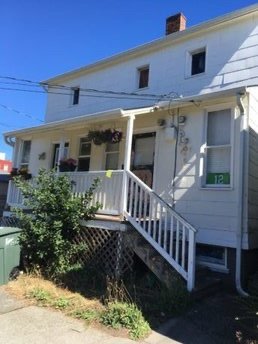Huh? My mother-in-law’s an ADU?
There was a lot of chatter this summer of 2016 over the proposal to allow the construction of three-story Detached Alternative Dwelling Units (DADUs) on modest sized lots now hosting single family homes. Accessory Dwelling Units (ADUs) tend to be independent dwelling units in an attic or a basement with separate doors and appropriate emergency exits. Realtors call an ADU a mother-in-law.
Some people fear that these new dwelling units will change our neighborhoods by increasing density and expediting the loss of the neighborhood’s historic character. Interestingly, the historic character of Upper Queen Anne especially the area west of Queen Anne Ave. with alleys includes a large number of alley houses. A brief tour of the area north of Smith between First and Third Avenues revealed at least 15 alley houses, all of which add to the historic character of Upper queen Anne. At least two of these alley houses are brand new, and three of them on Galer between 1st and 2nd West are really for the birds.
It may turn out though that the increase in DADUs (Detached ADU) and ADUs has an effect not unlike what happened in response to the Urban Villages created as part of the 1993 Comp Plan. Although written primarily to prevent urban sprawl in rural King County, the plan forced multi-family apartment buildings and condos into the Urban Villages and successfully protected single family homes and the historic neighborhoods in which they are located. Upper Queen Anne and Uptown were both designated villages with the Uptown village encouraging more commercial development than Upper Queen Anne’s.
I am particularly interested in the DADUs constructed long ago in our neighborhood and which now in their own right add its historic character. In many cases, the DADUs are located along the alley edge of simple single family homes and may have replaced early garages. Of course, that conclusion may indeed be speculative, for many of the houses in the neighborhood were constructed before cars were the prevalent way to get around. As is more likely, the alley houses expanded the main home on the lot making room for growing families or newlyweds. The house at 2004 First Avenue N. is said to have been a wedding gift for a newlywed child. Even if it isn’t an alley house, the gift idea lends credence to my guess.
The latest DADU/ADU proposals, championed by city council member Mike O’Brien, increase density, but they are not part of the city’s Comp Plan 35. If adopted, it will encourage high rise buildings in Urban Villages and in a few cases expands their borders. The city’s Uptown Urban Framework is yet another proposal that specifically calls for adding high-rise dwellings in Uptown and for which an Environmental Impact Statement is being finalized. The coincidence of these three sets of far-reaching proposals is confusing especially when they occurred at the same time as the publication of the Mayor’s Housing Affordability and Livability Agenda (HALA). It is easy to see why there might be some confusion in people’s minds between O’Brien proposal, Housing Affordability and Livability Agenda (HALA), the Uptown Urban Framework, and the Comp 35 Plan. In fact, one wonders cynically if the confusion is not an intentional political ploy to impede constructive grassroots comment and feedback.
If all these schemes are adopted, they will surely bring more people to Uptown and Upper Queen Anne and surely there will be some issues about where to park all the cars and walk their many dogs. Maybe though, adhering to the principles of the Growth Management Act and the Comp Plan, we’ll simply see more people, more cars, more dogs and, yes, even more single family homes saved to preserve Queen Anne’s historic character.



